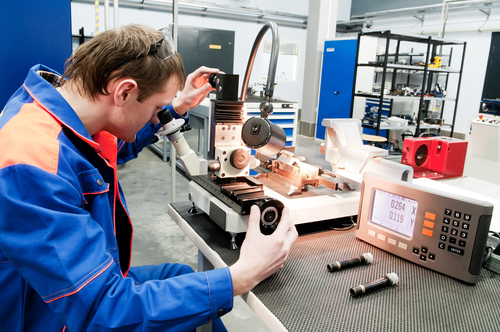The last 25-30 years have seen many advances in computerization, software applications and equipment use. Therefore, it is no surprise that metrology continues to benefit from these changes. With the advancement of 3D scanners and CMM laser scanners, the precision world of metrology during the process of manufacturing will continue to improve, as will the ability to ensure tighter controls over quality and inspection. There will be many more devices produced that will increase productivity not only in the manufacturing domain, but also in the automation industry.
Automation Of Processes
There is no doubt that automation of measurement processes will become the norm in the future, but there will still be scope for the use of probes and measuring devices for some industries. Automation is already happening in areas that use machines that are capable of artificial intelligence. There will be less need for human intervention or participation in this area as the problem-solving aspect of machines will recognize and rectify mistakes or errors of measurements as they occur. They will be able to communicate with other machines and if the mistake cannot be rectified at the point it is recognized, it will be possible for it to be rectified further down the processing line.
Manufacturing And Inspection Combined
The process of manufacturing and inspecting parts will be combined and will not be carried out by different teams or companies. More advanced computerized equipment will ensure the process can be carried out as a whole. Quality and inspection should be an integral part of the manufacturing process, and now it will be more routinely acceptable. The ability to carry out measurements at various phases of the development of a part, means that by the time it has been completed, it has been measured enough times to ensure the quality and precision is high. This is a very effective use of machine power and one that is welcomed by many industries, ensuring no replication of duplication of work is carried out.
Easier To Use
As metrology will continue to have the ability to self-correct and implement changes, then operators will need less training as their intervention will not be needed. It is likely that they will have a role more of an onlooker as the intuitive machinery does the job, only intervening if a machine breaks down or parts need replacing. This will have the effect of changing the whole dynamics of a manufacturing company.
Integrations Of Solutions
There is the likelihood that hardware and software will be developed by the same company. This will ensure a smoother integration and synergy between the processes. A more common understanding and interaction between the inspection or processing machine and the software means less glitches that can occur between co-operation. The programming language will also be the same, making a more streamline approach to the process.
A Worrying Time For The Workforce?
Although this all sounds very worrying for a human workforce, much of these compete solutions are in the distant future and will take a long time to materialize. There will still be roles required for human contact in these fields, but those roles will change and are likely to be more managerial in nature.





